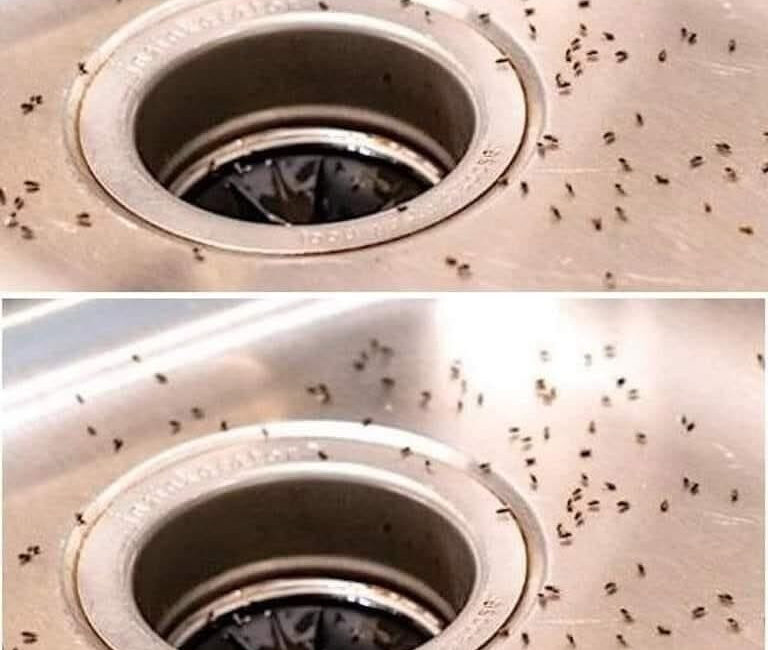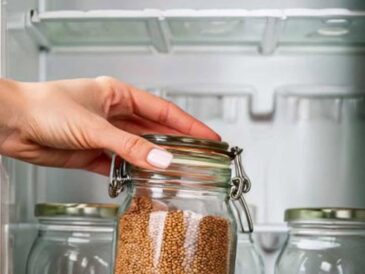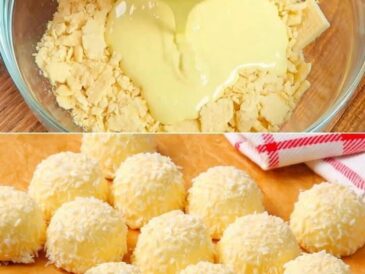Midges, often referred to as fruit flies, drain flies, or gnats, are tiny, pesky insects that can invade your kitchen and disrupt your daily routine. These unwelcome guests are more than just a nuisance; they’re attracted to your food, garbage, and moisture, and can multiply quickly if left unchecked. Whether it’s a few hovering around the fruit bowl or an entire swarm buzzing around your sink, midges are a common household problem that can make your kitchen feel unclean, even when it’s spotless.
Fortunately, there are plenty of natural remedies that can help you get rid of midges without relying on harmful chemicals or insecticides. In this article, we’ll explore seven effective, eco-friendly methods to eliminate midges from your kitchen and keep them from coming back. These solutions are simple, practical, and safe for both your home and the environment.
Understanding Midges: Why They Love Your Kitchen
Before we dive into the solutions, it’s essential to understand why midges, especially fruit flies and gnats, are drawn to your kitchen in the first place. Knowing what attracts them will help you better prevent them from taking over your space.
- Food and Sweet Scents: Midges are most attracted to rotting or fermenting food, particularly fruits, vegetables, and sugary substances. Even small crumbs or food particles left on countertops can provide a feast for these tiny insects.
- Moisture: These insects are drawn to damp areas like sinks, garbage disposals, and drain pipes. They thrive in the humidity and moisture found in kitchens, especially near water sources.
- Dirty Dishes: Leftover food on dirty dishes can attract midges, as they seek out decomposing matter.
- Overflowing Trash: Midges are also attracted to decaying organic matter in your trash can. If the lid is left open or the trash is overflowing, you’re essentially rolling out the red carpet for these pests.
Once midges find their way into your kitchen, they can reproduce rapidly, making it crucial to act fast before they become an infestation. Now, let’s explore seven natural methods you can use to get rid of these kitchen invaders.
1. Cleanliness is Key: Eliminate Attractants
The first step in getting rid of midges is addressing what’s attracting them. Keeping your kitchen clean is the most effective long-term strategy to prevent a midge infestation. Here’s how you can tackle cleanliness to eliminate their food sources:
Steps to Clean and Remove Attractants:
- Wipe Down Surfaces: Clean countertops, tables, and all surfaces regularly, especially after preparing food. Use a non-toxic cleaner, like a vinegar-water solution, to eliminate food residue and sticky spots.
- Check Your Fruit Bowl: Fruit, especially overripe bananas, apples, and berries, can quickly attract fruit flies. Remove any fruit that’s gone bad, and consider placing fresh fruit in the fridge rather than leaving it out on the counter.
- Inspect the Trash: Empty your trash regularly, especially if you have food scraps. Make sure to seal the trash bag tightly and place it in a closed container.
- Clean Drains: Midges are often drawn to organic matter in your kitchen sink drains. Use a mixture of hot water and vinegar or baking soda to clean out your drains regularly.
- Wash Dishes Promptly: Avoid leaving dirty dishes in the sink overnight. Rinse them immediately after use to prevent leftover food from attracting pests.
By keeping your kitchen pristine and eliminating any potential attractants, you’ll make your space much less inviting to midges.
2. Apple Cider Vinegar Traps: A Sweet Solution
Apple cider vinegar (ACV) is one of the most effective and natural ways to get rid of midges. The sweet, fermented scent of ACV is irresistible to these insects, and you can create a simple trap to lure and trap them.
How to Set Up an ACV Trap:
- Materials Needed:
- A small bowl or jar
- Apple cider vinegar
- A drop of dish soap
- Plastic wrap (optional)
- Instructions:
- Pour about half a cup of apple cider vinegar into the bowl or jar.
- Add a drop of dish soap to the vinegar. This will break the surface tension of the liquid, making it difficult for the midges to escape once they land.
- Optionally, cover the bowl with plastic wrap and poke a few small holes in it. This creates a funnel effect, which directs the midges into the vinegar without letting them fly out.
- Place the trap near areas where you’ve seen the most midges, such as your fruit bowl, trash can, or sink.
The sweet smell of apple cider vinegar will attract the midges, and once they land, they’ll get trapped in the liquid and drown. You can empty and refill the trap as needed until the infestation subsides.
3. Essential Oils: Natural Repellents for Midges
Essential oils are another powerful and natural way to repel midges. Many essential oils, including peppermint, eucalyptus, and lavender, have strong scents that midges find unpleasant, driving them away from your kitchen.
How to Use Essential Oils to Repel Midges:
- Spray Bottle: Mix 10-15 drops of your chosen essential oil (peppermint and eucalyptus are particularly effective) with 1 cup of water and a teaspoon of rubbing alcohol. Shake well and spray the solution around the kitchen, focusing on areas where midges are most active.
- Cotton Balls: Soak a few cotton balls in essential oils and place them near drains, trash cans, or fruit bowls. The strong scent will discourage midges from lingering.
- Diffuser: If you already use an essential oil diffuser, you can add a few drops of repellent oils to the diffuser and run it in your kitchen. Not only will this keep midges at bay, but it will also leave your kitchen smelling fresh and pleasant.
Using essential oils is an effective and chemical-free way to keep midges away while also filling your home with a lovely aroma.
4. Herbal Sachets: A Natural Midge Repellent
Herbs are not only great for cooking; they can also work wonders in keeping insects like midges away from your kitchen. Strong-smelling herbs like bay leaves, cloves, and mint can serve as natural deterrents for midges.
How to Use Herbs for Midge Control:
- Bay Leaves: Place several bay leaves in areas where midges tend to gather, such as near your garbage can or fruit bowl. The scent of bay leaves is unpleasant to many insects, including midges.
- Cloves: Stick cloves into oranges or apples and place them around the kitchen. The aroma of cloves is a strong deterrent to midges and other pests.
- Mint: Grow fresh mint in small pots or sachets and place them near windows, doors, and sink areas. Midges dislike the strong, refreshing scent of mint.
You can also make a sachet by filling a small cloth bag with dried herbs and hanging it in your kitchen. These natural repellents not only help keep midges away but also add a rustic, pleasant touch to your kitchen décor.
5. Make Your Own Midge Spray Using Baking Soda and Vinegar
click page 2 to continue




